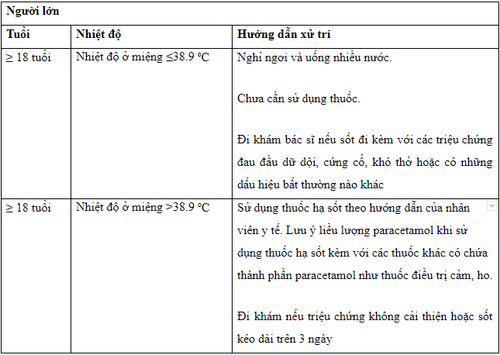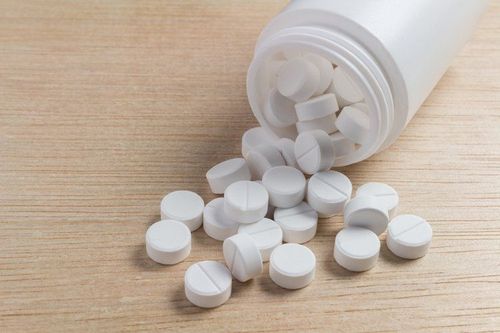This is an automatically translated article.
The article was professionally consulted by Pharmacist Dinh Thi My Hanh - Vinmec Central Park International General Hospital.Fever is an increase in body temperature, usually caused by a parasitic or viral infection. A febrile reaction is generally harmless and is a sign that the immune system is fighting the pathogen. Fever usually does not require treatment. However, this condition makes the patient feel very uncomfortable, tired and want to have a fever quickly.
1. When to reduce fever quickly?
Human body temperature is 37oC. However, in reality, the normal temperature can range from 36.1 degrees Celsius to 37.2 degrees Celsius or more. Accordingly, the change in body temperature depends on the level of activity and time of day. Usually, the elderly have a lower body temperature than the young.Signs of body temperature measurement that indicate an urgent need to reduce fever include:
A temperature in the rectum, ear or temple of 38 degrees Celsius or higher; Oral temperature of 37.8 degrees Celsius or higher; The temperature in the armpit is 37.2 degrees Celsius or higher. When an adult or child has a fever, the main goal of rapid home fever reduction is to relieve discomfort and allow the patient to rest. Treatment of fever can improve symptoms but cannot shorten or prolong the duration of the illness. Short-term increases in body temperature can help the body fight disease. However, a severe fever can be a symptom of a serious condition that requires immediate medical attention.
2. Quick guide on how to reduce fever
The following tips are effective ways to reduce fever at home:Drink plenty of water, oresol solutions or juices can be used to prevent dehydration Wear loose, light, comfortable clothing; Cover with a blanket if you feel chills, until the symptoms go away; Do not give aspirin to children; Children should not be given any pain relievers until they have been examined and diagnosed by a doctor. Use acetaminophen or ibuprofen as directed in the drug information leaflet.

Cách hạ sốt với trẻ sơ sinh và trẻ mới biết đi

Cách hạ sốt với trẻ nhỏ và thanh thiếu niên

Cách hạ sốt với người lớn
3. Some other instructions
In case of fever accompanied by a weakened immune system (people with HIV, cancer or autoimmune diseases), the patient needs to go to the hospital to find the appropriate treatment.Fever is often a sign of an infection. Sometimes, the infection turns dangerous very quickly and is difficult to treat. Therefore, especially for febrile patients with weakened immune systems, medical support and care is very important and should be done early.
4. Mistakes when reducing fever quickly at home 4.1. Combination of many drugs
4.1. Combining multiple drugs When the cause of fever has not been identified, do not arbitrarily combine many drugs together and consider it as a quick way to reduce fever. The use of paracetamol in combination with ibuprofen is absolutely forbidden if you have dengue fever. In addition, combining 2 or more antipyretic drugs together carries the risk of drug overdose and serious side effects, especially stomach ulcers.For children, parents are not allowed to arbitrarily combine drugs to quickly reduce fever for their children. The active ingredient ibuprofen, although effective in reducing fever, is not the preferred drug group for children. Arbitrarily combining drugs can lead to dangerous consequences, especially for children with fever due to infection. Children are very susceptible to dengue fever in the hot season. Meanwhile, common antipyretic drugs will not work for patients with dengue fever, some are also contraindicated due to the risk of causing severe bleeding.
To support fast and effective fever reduction, the first priority drug, with the least side effects for children, is still acetaminophen (paracetamol). However, parents need to pay attention to the dosage, frequency and duration of taking the medicine to avoid the risk of overdose.

Khi chưa nhận diện được nguyên nhân gây ra sốt, bệnh nhân không nên tự ý kết hợp nhiều loại thuốc với nhau
For more detailed advice and examination by experienced specialists, customers can book an appointment directly on the website for the best service.
Please dial HOTLINE for more information or register for an appointment HERE. Download MyVinmec app to make appointments faster and to manage your bookings easily.
References: Mayoclinic.org; Healthline.com












